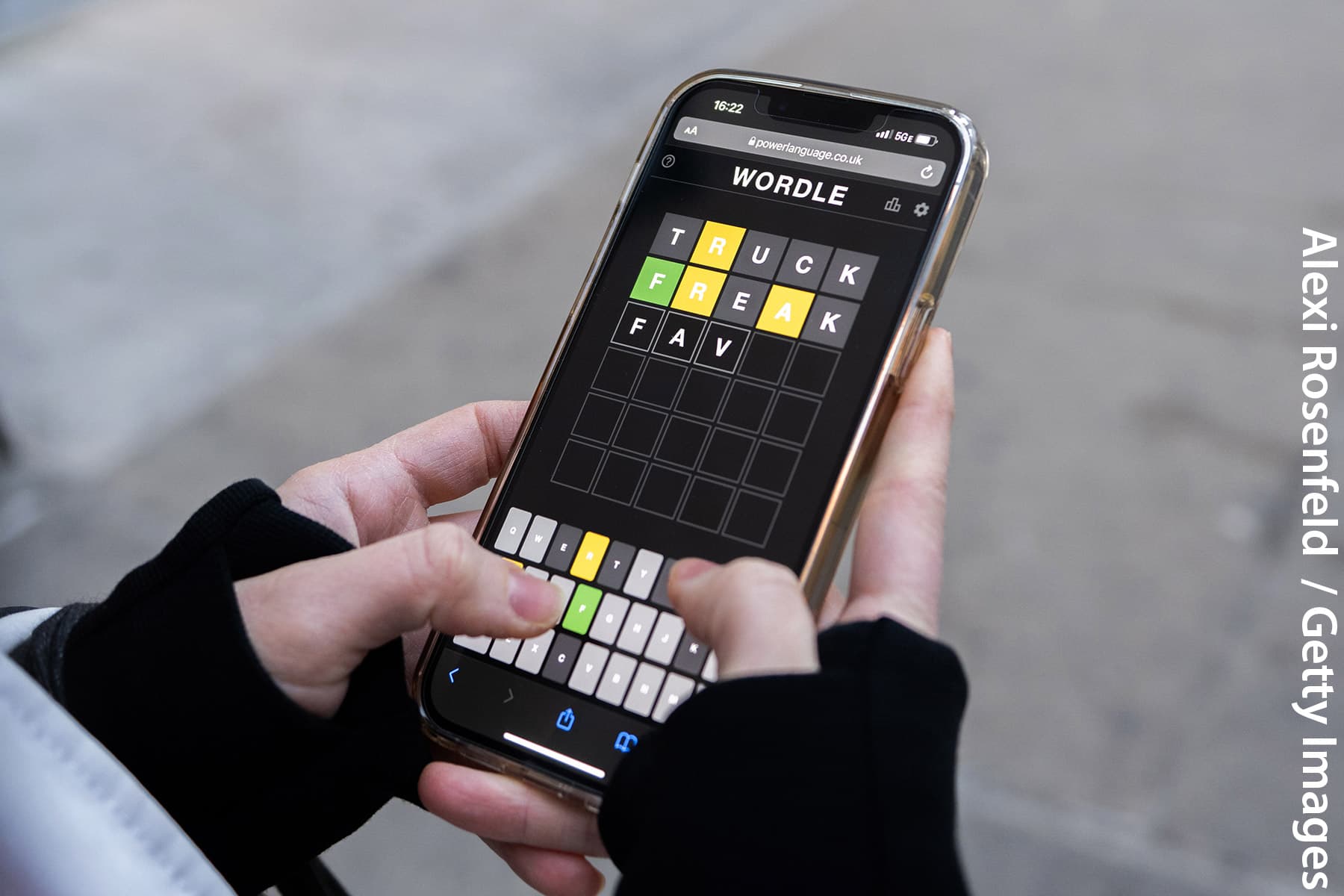Could It Be Our Best Motivational Tool?
Aug. 30, 2022 – Wordle is a fun game that brings me pleasure and satisfaction every day.
Except when it’s a stupid waste of time. Like the day my streak ended, six games short of 100. I just didn’t see the point of a silly word puzzle that contributes nothing to the common good.
I mean, really. I have better things to do. But I still play it, every day.
It’s not just me. Ask Jackie Silverman, an assistant professor of marketing at the University of Delaware who studies “the judgments and consequences of repeated behaviors.”
She’s a streak expert. And that’s a hot field right now – the proof is on your phone. “Streaks are just so prevalent in people’s lives,” she says.
A streak is among the most obvious and addictive ways for a company to lure us back to its website. Apps like Snapchat and Duolingo (the language-learning company) use streak maintenance like a boss, and Wordle is no slouch.
But streaks can be helpful and healthful, too, for instance for people trying to get in shape or lose weight. “Streaks can serve as a tangible cue of progress,” says Kaitlin Woolley, PhD, a marketing professor at Cornell University who studies goal pursuit and motivation.
Naturally there are apps just for building and tracking streaks: Habitify, Streakster, Streaks, Loop, Productive, on and on. Their apparent purpose is to encourage healthy habits. “Streaks offer a sense of momentum, which is motivating,” says Woolley. “People feel they’re on a roll, and psychologically that makes it easier to continue.”
Silverman says streaks can help throughout life – in education (attendance, test scores, books read) and the workplace (arriving on time, say, or making every meeting). Factories, she notes, proudly post signs about how many days they’ve gone without an accident.
Indeed, the lure of a perfect streak is embedded deep within the human psyche. How can we leverage that to help us, without being totally derailed when a streak, inevitably, ends?
The Rush of Reward
“People find streaks inherently valuable and motivating,” says Silverman, who has the receipts. She co-authored with Alixandra Barasch, PhD, of the University of Colorado, a study titled On or Off Track: How (Broken) Streaks Affect Consumer Decisions, published in June in the Journal of Consumer Research.
What they found was that telling people – and reminding them – that they have a streak makes them far more likely to keep the streak going. Logging and tracking add fuel to this obsessive fire, she says: “Highlighting those streaks via logs and technology has a huge impact.” (Even old-school checkmarks on your wall calendar can work, she says, though feedback from others generally carries more weight.)
In their experiments – word games, number games, exercise programs – they found that people were so devoted to keeping a streak alive that they’d prefer to keep playing instead of switching to something that gave them more pleasure.
If their streak ended, they’d agree to watch an advertisement when told it would “repair” their streak.
Duolingo knows this. It will allow a customer to preserve their streak by using its virtual currency (“gems” and “lingots” earned by completing lessons) to purchase a “streak freeze” if they know they’re going to miss a day.
Snapchat has countless teens hooked on Snapstreaks, which means you’ve exchanged Snaps with someone on consecutive days. A “fire” icon appears, with a number indicating days the Snapstreak has been going.
You can feel the sadness of a young user in the “I lost my Snapstreak” page in Snapchat support: “If you lost your Snapstreak and you know you’ve sent a Snap (not Chat) back and forth within the 24 hour window, please let us know.”
The Power of Symbols
Fire, checkmarks, coins, lingots – they’re all part of the psychological play, Silverman says. “People really value symbols and feedback about what they’ve done,” she says. Sometimes the urge to acquire symbols becomes more important than whatever motivated them to start the streak in the first place, she says.
Jordan Etkin, PhD, a marketing professor at Duke University, says icons “act almost like money does, in terms of being an external reinforcer. It feels like a currency, like you’re accumulating some credit, some value.”
For me, it was the numbers on my Wordle stats page, which were all headed to 100: games played, winning percentage, current streak, max streak. It was going to look glorious. The stats and the “Guess Distribution” bar graph loomed in my mind like a judgey assessment of my language skills.
That’s way too emotional a reaction to a bunch of pixels, right? But the whole thing is emotional, including that sinking feeling when my streak ended. I was deflated, dejected, despondent.
There’s one more “de,” Silverman told me – demotivated. It was true: I had no interest in playing the next day (though I did), and the next time I lost a game, I cared a lot less. Even skipped a day, absent-mindedly, and shrugged it off.
When a streak breaks, Silverman says, “that is especially demotivating because people interpret that as a goal failure.”
I did feel like a failure, especially since I’d been pre-bragging to friends how close I was to a 100-game streak.
That’s another reason we like streaks: It’s a way of showing off. Etkin says sharing results is a form of status signaling: “You feel like you look good to others.”
Busted! (For the record, I only shared my accomplishments and failure with those close to me. My wife was amused.)
But while a broken streak feels like your progress “has been reset to zero,” it helps to remember that isn’t the case, Woolley says. “Just the tangible aspect people are tracking has been reset.” If your daily-walk streak breaks, your fitness will still carry over.
“That bummed-out aspect is what inspired our project,” says Silverman. She and her husband, a craft beer aficionado, were at a brewery with friends, including Barasch, an associate professor of marketing. Her husband noticed he hadn’t logged a beer he’d tried the previous weekend, as was his usual practice. His logging streak was broken, so he had less interest in logging that day’s beer. “That’s weird,” Silverman and Barasch told each other, and their paper was the result, years later.
How Streaks Can Help
Speaking of drinking, Silverman notes that one of the best-known and most valuable uses of streak mentality is among members of Alcoholics Anonymous and Narcotics Anonymous. They earn medallions marking sobriety milestones.
If they relapse, “it’s quite daunting for them to get back to where they were,” she says. The organizations’ supportive mentality is impressive, she points out: “They support each other and say, ‘No, you earned that chip. You accomplished that streak. You did it once and you can do it again. But just because you relapsed doesn’t mean it’s all over.’”
Silverman says that encouraging approach can help lessen the demotivation of a broken streak, “which would be really nice for marketers to try to incorporate, too.”
Don’t hold your breath. Silverman says that some friends who know of her research are more streak savvy now. “They feel manipulated.” But, she quickly adds, streaks are “mostly there to help you. I don’t think it’s a problem, and I still indulge in streaks.” COVID-19 broke her 150-week streak of working out, and sure enough, she’s been less motivated since then. “I need to get a new streak going.”
Streaks are appealing as a measure of progress, and thus powerful, says Adam Alter, PhD, a marketing professor at New York University and author of Irresistible: The Rise of Addictive Technology and the Business of Keeping Us Hooked. As a streak gets longer, “keeping it alive is more meaningful. Add these elements together, and you have a strong recipe for reinforcement and reward.”
For her part, Silverman remains hopeful that her research may “help generate new ideas about how to keep people engaged and happy.”
One thing is consistent: Streaks mean money. The New York Times bought Wordle for more than $1 million last fall from its developer, Josh Wardle. In its first-quarter 2022 earnings statement, the company said, “Wordle brought an unprecedented tens of millions of new users to the Times.” The company enjoyed its best quarter ever for new subscribers to its Games section. Digital subscription revenue was up 26%.
When Josh Wardle sold the game to the Times, he told fans, “I am working with them to make sure your wins and streaks will be preserved.”
He gets it.




1 comment